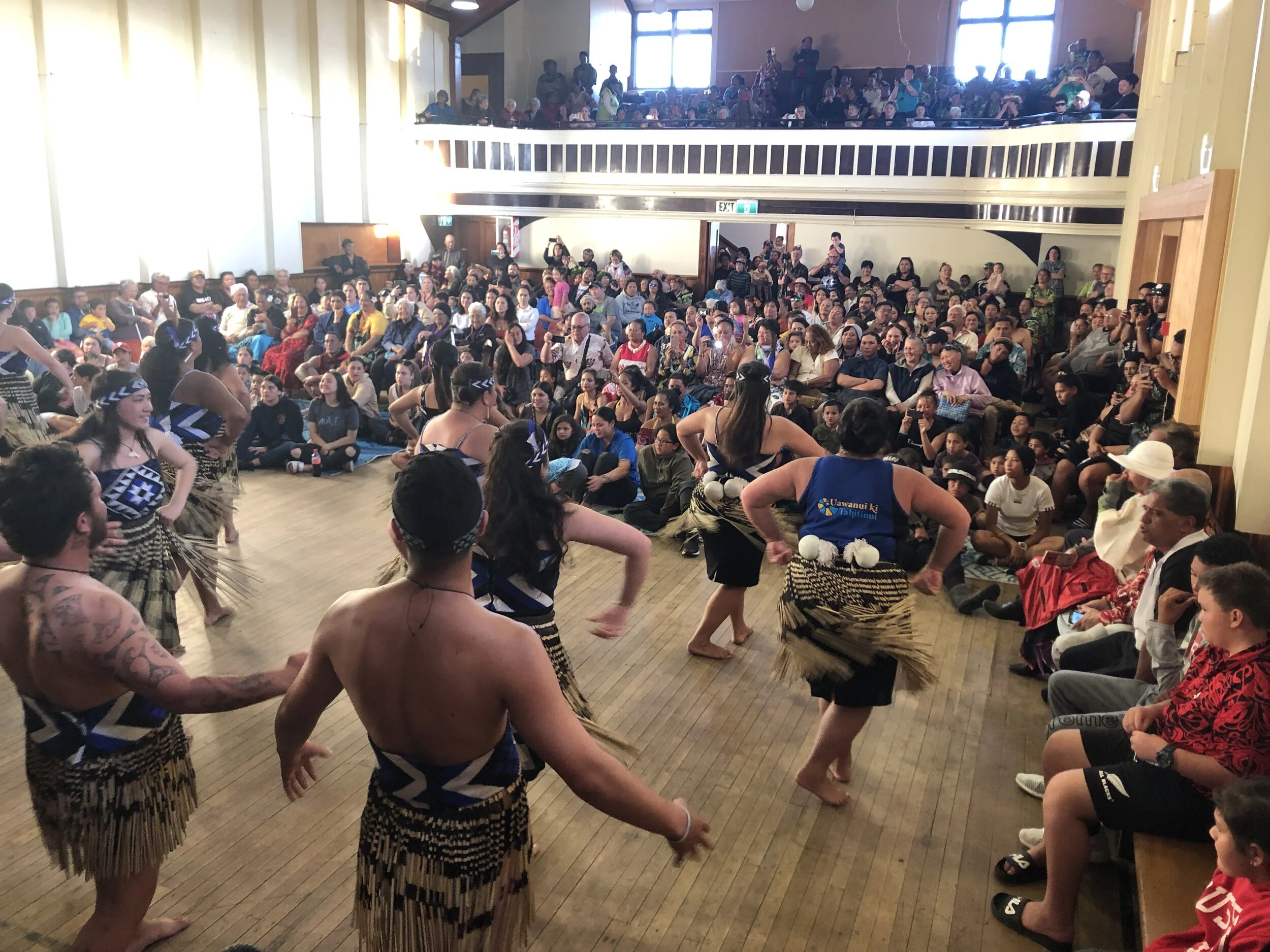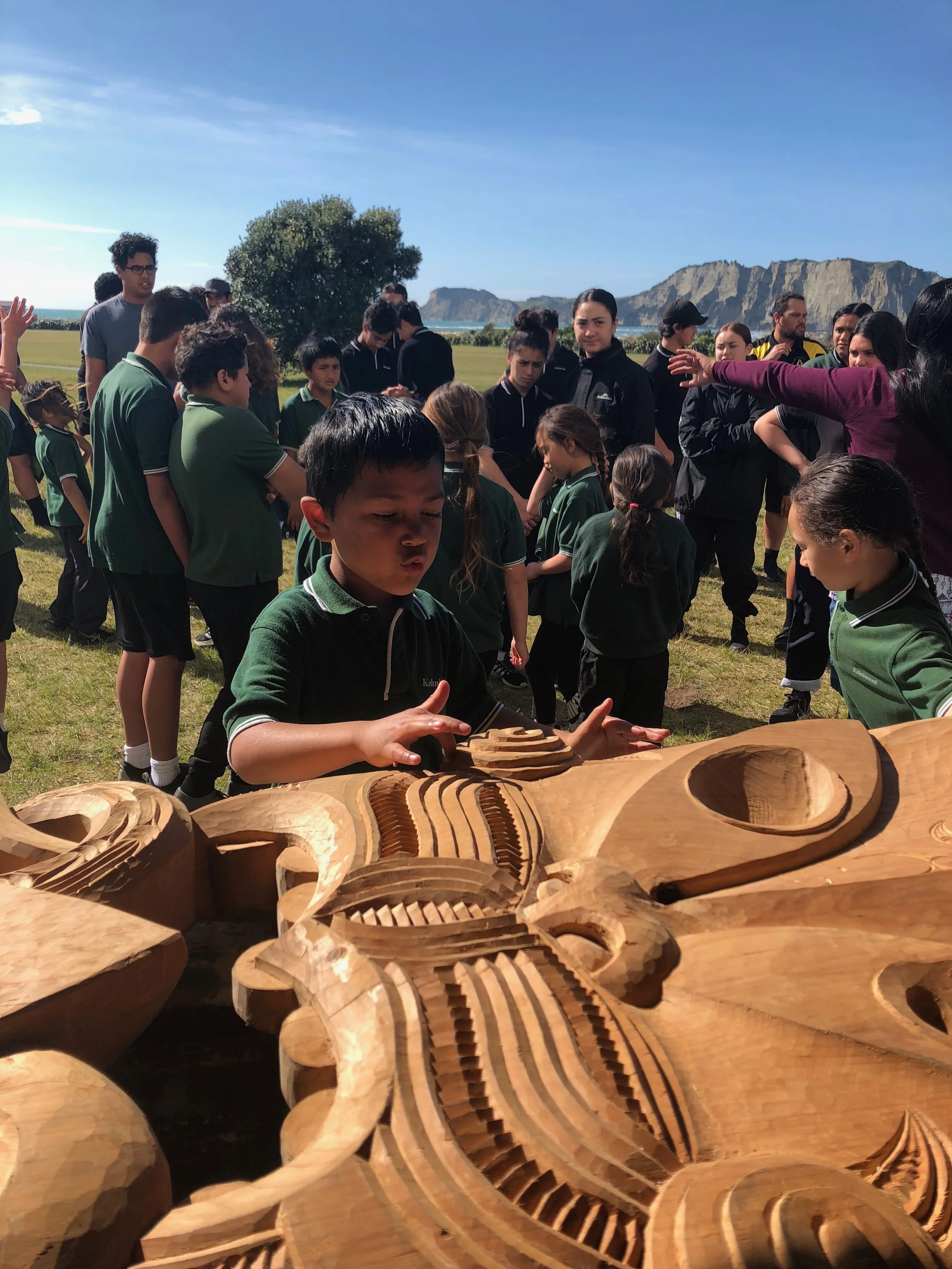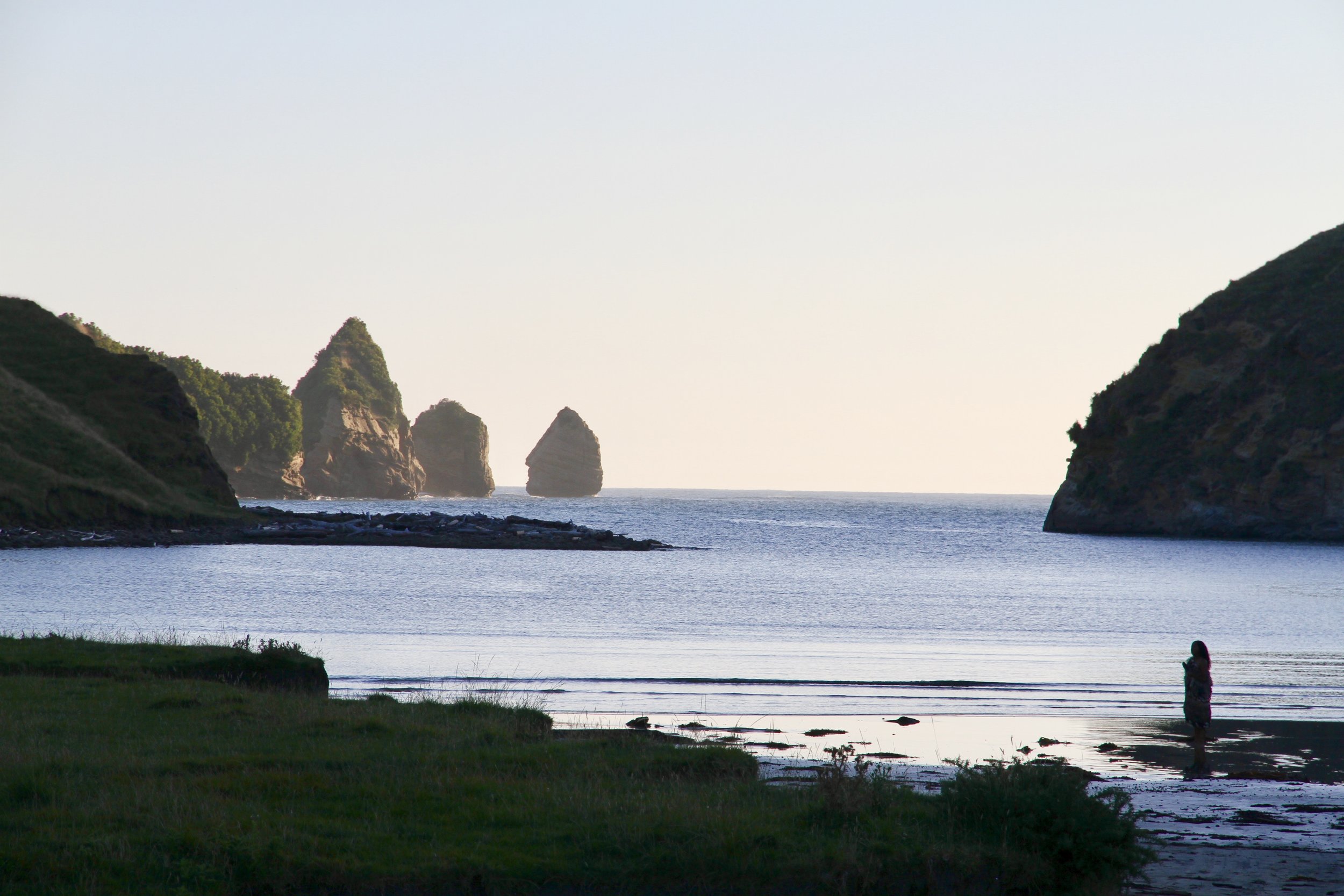This story is about the Ariki, Te Kani-a-Takirau. He was the son of Te Rongotumamao and Ngarangikahiwa. He was born around about 1799 and died in 1956.
Na Victor Walker ēnei kōrero
Te kani a takirau | he ariki
He was born in the evening just as the Takirau moon was dancing the whispy night clouds hence his name - Te Kani-a-Takirau (The dance of the Takirau moon). Through his father he was the mokopuna of Te Whakatatare-o-te-rangi and Hineirahirahia-i-te-rangi. Through his mother Ngarangikahiwa he was the mokopuna of the fabulous Hinematioro and Te Hoatiki of Whangara.
Not only was Te Kani a Takirau of the senior most whakapapa lines throughout Aotearoa but he was kind and generous to his people Te Aitanga-a-Hauiti. He was adept of the lore of Te Rawheoro Whare Wananga and was considered tapu because of his ancestry.
He dressed in flax garments as fine as silk and was known to have a number of Kakahu kuri - black and white patchwork dog skin cloaks. He was tall and aristocratic with long auburn hair tied in a bun and ponytail and wore very little moko. He was the holder of the magnificent greenstone patu called Te Heketua.
He was also the holder of the toki pou tangata called Kapuhiraroko with the greenstone adze called Rangikotama. He was an astute business and united hapu in industry, horticulture and trade especially flax.
He was approached to be the first Maori King but declined saying "Ehara taku maunga i te maunga nekeneke, he maunga tu tonu mai onamata. Ko toku mana tuku iho no Tuawhakarere - he ihu to mai no Te Po'. My mountain is a mountain that does not move, it has stood steadfast from time immemorial. My prestige descends to me from the beginning of all things - a legacy from the time of the Great Night". He was a thoughtful negotiator and lived at Taumata a Kuri and Hoturangi.
Te Kani a Takirau was greatly saddened by the death of his son Te Waikari and composed a lament for him. He died in 1856 and was buried in Whangara.
Te kani a takirau | Whakairo
The whakairo is called 'He ihu tō mai nō Te Pō'. My prestige descends to me from the Great Night. It is a metaphor for the fabulous whakapapa lines of Te Kani-a-Takirau. The three figures are Te Kani-a-Takirau at the top.
His mum Ngarangikahiwa is in the middle and his dad Te Rongotumamao is at the bottom. He ihu to mai no Te Po design elements include the narratives of Te Kore, Te Po and Te Aomarama.
Ngarangikahiwa is the daughter of Hinematioro and Te Hoatiki. She is the embodiment of the senior lines of whakapapa of Te Whanau a Apanui, Te Whanau a Tuwhakairiora, Te Whanau a Hinerupe in the north and Te Whanau a Ruataupare, Te Aitanga-a-Hauiti and Ngāti Konohi in the South.
Hinematioro was considered to be the 'Queen' of the Tairāwhiti in her lifetime. Hinematioro was the daughter of Ngunguruterangi who was a mokopuna of Rerekohu from Te Araroa. Ngunguruterangi married Tanetokorangi a mokopuna of Konohi from Whangara. Konohi and the Te Whanau Apanui warrior Tamahae had made a peace pact at Whangara to never raise arms against each other. "Ka tū te pōhatu i Wahakino As the rock at Wahakino remains steadfast Ka tū te pōhatu i Takore So too will the rock at Takore" Tamahae however killed one of Konohi's relations called Hinetapora at Mangahanea and Konohi couldn't not avenge her death, He traveled through to Te Whanau a Apanui to avenge her death On the way through to Te Kaha the chief of Te Araroa, Rerekohu made some disparaging remarks about the army of Konohi. Konohi avenged the death of Hinetapora in Te Kaha and returned to Rerekohu to follow up on his insulting remarks. Rerekohu promptly offered two of his mokopuna one was Ngunguruterangi who married his mokopuna Tanetokorangi and had Hinematioro who married Te Hoatiki another mokopuna of Konohi. Hinematioro was always kind to her people. She had amazing gardens from Te Kaha all the way through to Whangara. Two of her gardens were called 'Te maara a Hinematioro and Te maara a te atua". Hinematioro and Te Hoatiki had Ngarangikahiwa who like her grandmother was kind and generous to their people. Ngarangikahiwa married Te Rongotumamao. Te Rongotumamao was an articulate scholar who maintained the traditions of the Te Rāwheoro Whare Wānanga.
Te Rongotumamao was the son of Te Whakatatare-o-te-rangi and Hineirahirahiia-i-te-rangi. Te Whakatatare and Hinematioro were cousins. Te Whakatatare-o-te-rangi Sir Apirana Ngata records the following which he was supplied by his father Paratene. “Te Whakatatare-o-te-rangi was one of the highest ranking chiefs of the tribe of Te Aitanga-a-Hauiti, and of the East Coast. He was one of the grandfathers of Te Kani-a-Takirau; and his home was at Uawa Hinematioro and Te Whakatatare-o-te-rangi were the paramount ariki of Uawa and surrounding districts when Captain James Cook landed in 1769. Te Whakatatare-o-te-rangi was also the eastern pou or pole of Te kupenga-a-Te Huki, the net of Te Huki. It was formed by the famous Ngati Kahungunu ancestor Te Huki of the Wairoa district.











